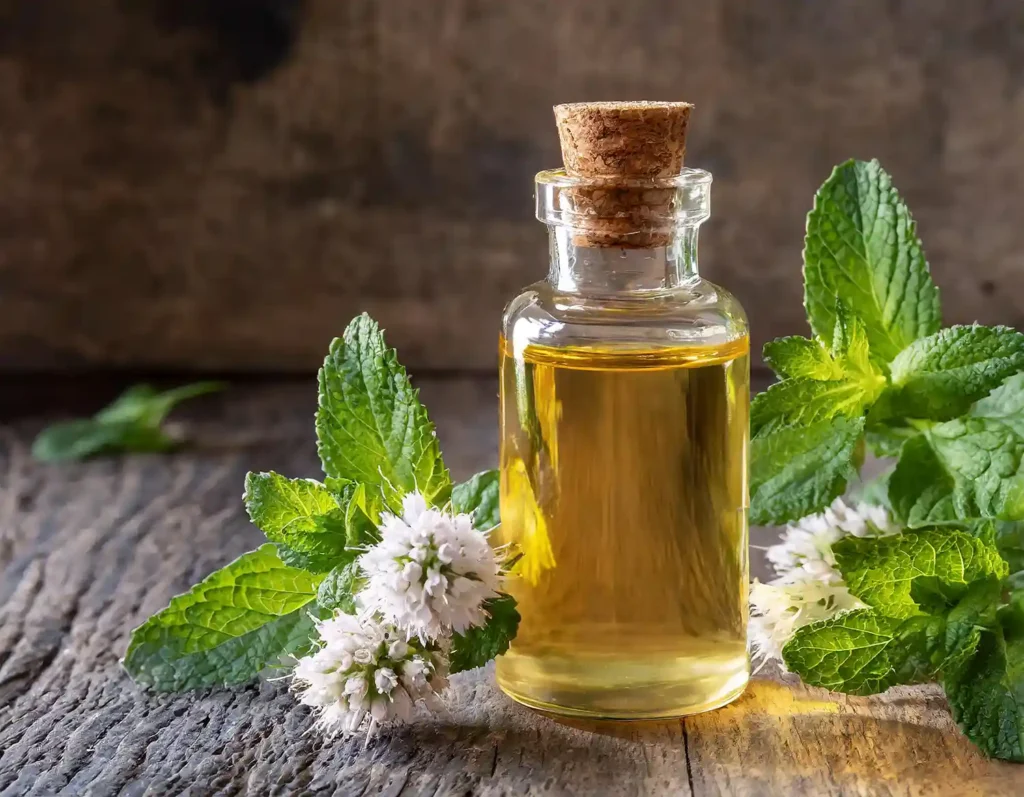In aromatherapy, Peppermint essential oil is a versatile and potent extract derived from the hybrid peppermint plant, a cross between spearmint and water mint. Celebrated for its benefits, Peppermint oil has carved a niche in aromatherapy and topical applications.
From easing muscle pain and helping reduce abdominal pain to its use in managing IBS symptoms, the efficacy of Peppermint oil is widely recognised. This exploration delves into the various aspects of Peppermint oil, highlighting its therapeutic potential while acknowledging the need for cautious application.
Join us as we uncover the wonders and precautions of using Peppermint oil, a gem in herbal remedies and one of the most popular essential oils.
The Journey of Peppermint Oil: From Plant to Potent Extract
The Peppermint Plant: A Sweet-Smelling Herb with Powerful Properties
The Peppermint plant is more than just a sweet-smelling herb; it’s a cornerstone of herbal medicine. This important medicinal plant has been used throughout history for its aromatic leaves and ability to help those cope with various conditions.
The journey of Peppermint essential oil begins with these vibrant green leaves, rich in essential oils and potent compounds.
Extracting the Essence: How Pure Peppermint Oil is Made
Peppermint essential oil originates from the leaves of the peppermint plant, a hybrid of watermint and spearmint, and has been used for centuries in various cultures for its medicinal properties.
The transformation of Peppermint leaves into Peppermint essential oil is a process steeped in tradition and science.
The essential oils are carefully extracted through steam distillation, ensuring that the pure Peppermint oil retains its therapeutic properties. This method captures the plant’s essence, resulting in a concentrated oil that embodies the plant’s benefits, from easing muscular pain to relieving tension headaches.
The final product, a highly concentrated Peppermint essential oil, is a testament to the plant’s natural potency and the meticulous process of its extraction.

Peppermint Oil Benefits in Aromatherapy: Soothing Minds and Bodies
The Essence of Aromatherapy: Inhaling Peppermint Oil Vapour
Peppermint oil, a key player in aromatherapy, is celebrated for its refreshing and invigorating scent.
When inhaled, Peppermint oil vapor acts as a natural mental stimulant, enhancing concentration and alleviating mental fatigue. This makes it particularly beneficial in settings that demand focus and mental clarity. Additionally, its cooling and soothing properties may effectively reduce the discomfort of tension headaches.
The practice of inhaling Peppermint oil, either through a diffuser or directly from a Peppermint essential oil drop, can also provide relief from sinus congestion and respiratory issues, making it a versatile tool in holistic health practices.
Crafting the Perfect Ambiance: DIY Peppermint Oil Diffuser Blends
The art of creating DIY Peppermint oil aromatherapy blends allows for a customised aromatherapy experience. Here are a few popular blends that harness the benefits of Peppermint oil:
1. Energising Morning Blend: Combine 3 drops of Peppermint oil with 2 drops of Lemon and 1 drop of Rosemary essential oil. This blend is perfect for kick-starting your day with energy and positivity.
2. Relaxation Blend for Stress Relief: Mix 3 drops of Peppermint oil with 4 drops of Lavender and 1 drop of Chamomile essential oil. This blend promotes relaxation and calmness and is ideal for unwinding after a long day.
3. Focus and Concentration Blend: Blend 2 drops of Peppermint oil with 4 drops of Frankincense and 1 drop of Clary Sage essential oil. This combination is excellent for enhancing focus during work or study sessions.
4. Breath Easy Blend for Respiratory Support: Combine 3 drops of Peppermint oil with 2 drops of Eucalyptus and 1 drop of Tea Tree essential oil. This blend is beneficial for clearing the airways and supporting respiratory health.
In addition to these blends, Peppermint oil can be combined with other essential oils like Sweet Orange for a mood-lifting effect or Spearmint essential oil for a more nuanced minty aroma.
When using Peppermint oil in aromatherapy, it’s important to ensure it is pure and high-quality to maximise its therapeutic benefits. Whether used alone or in a blend, the effects of peppermint oil’s role in aromatherapy are undeniably powerful, offering a natural and effective way to enhance mental and physical well-being.
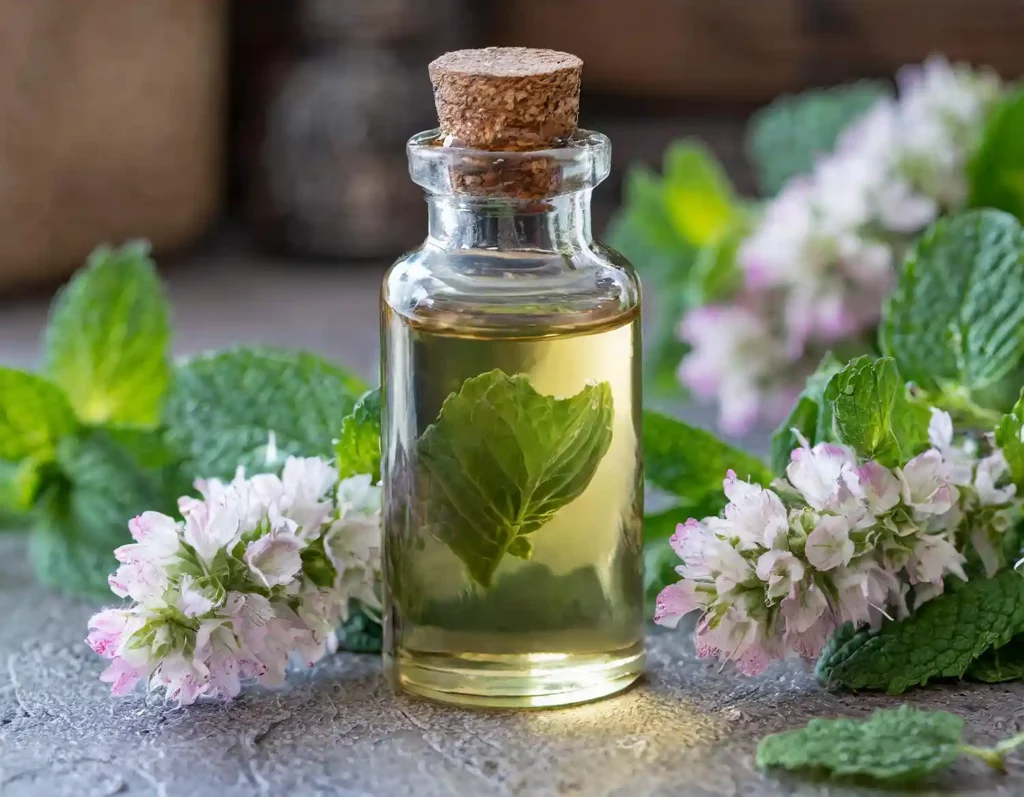
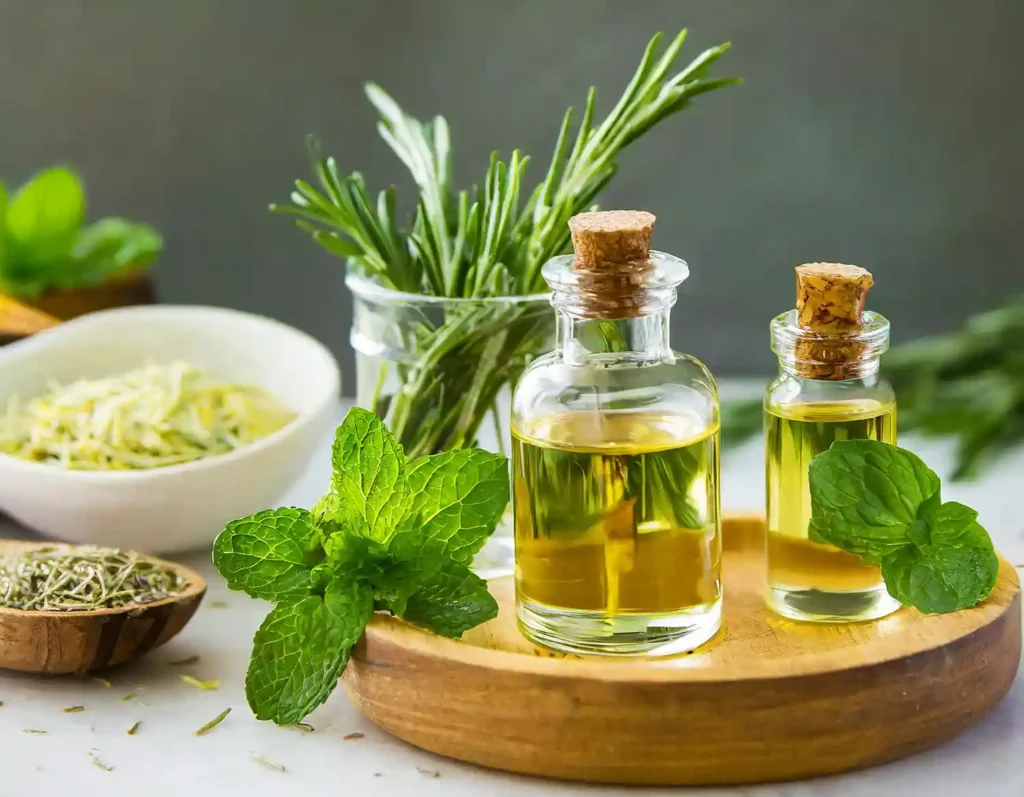
Peppermint Oil Benefits for Topical Applications
Peppermint Essential Oil for Skin Care and Muscle Relief
Topical peppermint oil offers a myriad of benefits for both skin and muscle health. Its natural cooling properties, thanks to its high menthol content, make it an excellent choice for soothing muscle pain and reducing inflammation.
When diluted with a carrier oil, such as Jojoba oil or Sweet Almond oil, Peppermint oil can be massaged into sore muscles, offering relief from discomfort and aiding in muscle recovery.
In skincare, peppermint oil’s soothing qualities make it beneficial for treating conditions like acne, sunburn, and itchy skin. Its natural anti-inflammatory and antimicrobial properties help calm skin irritation and reduce redness.
Topical Blends for Muscle and Skin Care:
1. Muscle Soothing Blend: Mix 4 drops of peppermint oil with 10 ml of carrier, like coconut oil. This blend can be massaged into aching muscles to help reduce pain and improve circulation.
2. Skin Clearing Blend: Combine 1 drop of Peppermint oil with 5 ml of Jojoba oil. Apply this blend to areas affected by acne to harness Peppermint oil’s antimicrobial properties. Avoid use near the eyes and mucous membranes.
3. Headache Relief Blend: Blend 2 drops of Peppermint oil with 5 ml of carrier oil and gently massage onto the temples and back of the neck to relieve tension-associated headaches.
Peppermint Oil in Pain Management: From Headaches to Muscle Aches
Peppermint oil is also highly effective in managing various types of discomfort when applied externally. Its analgesic properties make it a natural alternative for pain relief, particularly for headaches and muscle aches.
Applying a diluted Peppermint oil blend to the forehead or affected areas can provide quick relief from headache pain. Additionally, its anti-inflammatory qualities may be beneficial in reducing swelling and discomfort associated with muscle strains and sprains.
Additional Topical Uses:
1. Foot Care Blend: Mix 4 drops of Peppermint oil with 10 ml of carrier oil and massage into the feet for tired and sore feet. This can help reduce swelling and refresh tired feet.
2. Cooling Body Mist: Why not try a cooling and refreshing mist using Peppermint hydrolat. Use it on hot days or after workouts for a refreshing effect.
Incorporating Peppermint oil into your topical regimen can be a game-changer, especially regarding natural pain management and skin care.
Hair Care
Peppermint oil also finds extensive use in hair care routines. Its invigorating scent and cooling sensation make it a popular ingredient in hair care products. When added to shampoos or scalp treatments, peppermint oil can stimulate the scalp, promote hair growth, and provide relief from dandruff. Its antifungal properties further aid in maintaining a healthy scalp.
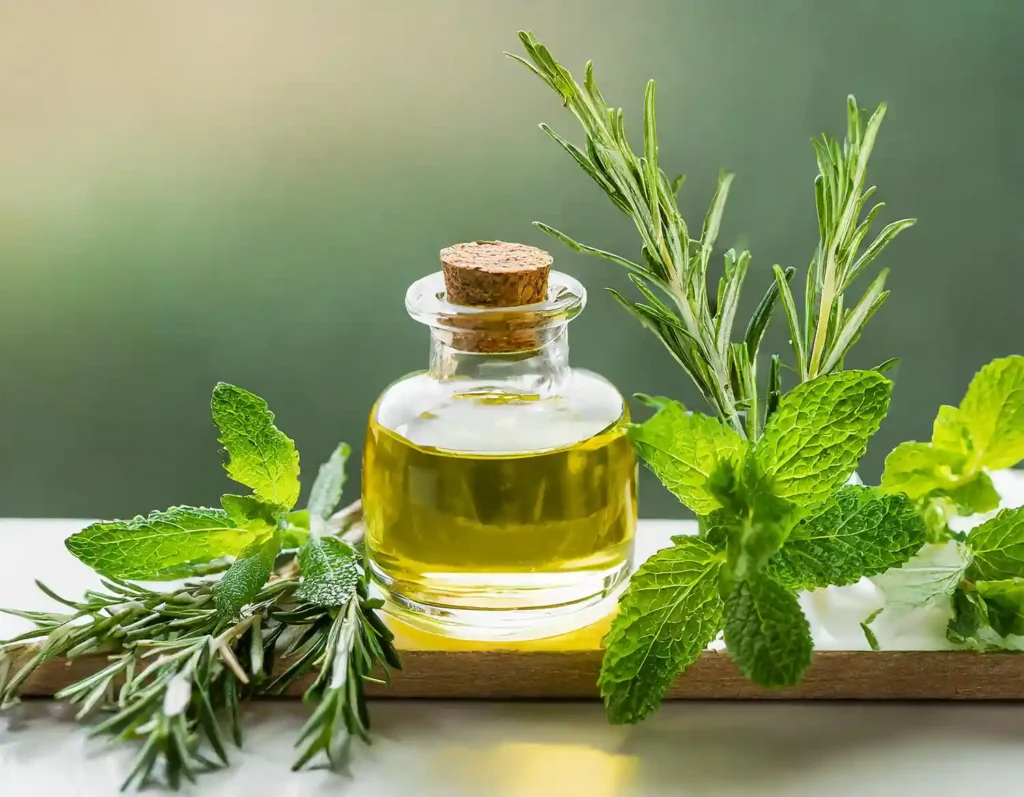
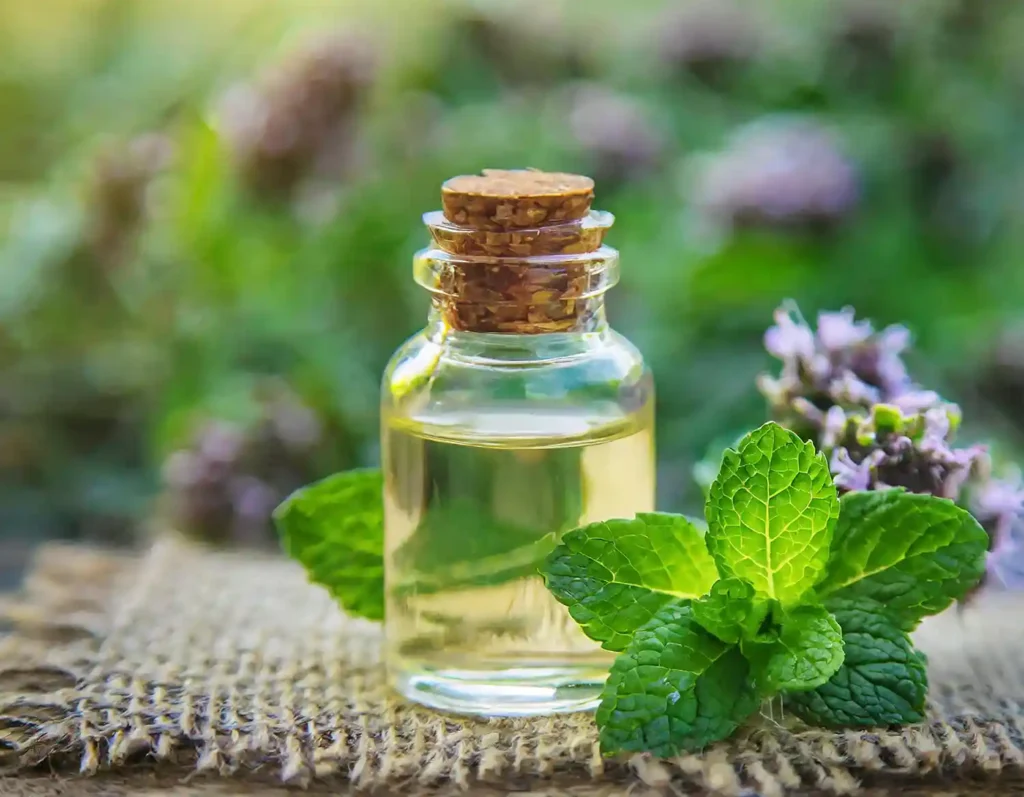
Minty Freshness For the Home!
It’s a Natural Pest-Repellent
Peppermint oil’s potent aroma and natural properties lend itself to a variety of everyday uses in the home. One of its most popular applications is as a natural pest repellent. Its strong scent is particularly effective against ants, spiders, and even rodents, offering a non-toxic alternative to chemical repellents.
Placing a few drops of Peppermint oil on cotton balls and distributing them in problem areas can help keep pests at bay.
Homemade Cleaning Products
Another everyday use of Peppermint oil in the home is in homemade cleaning products. Its antibacterial properties make it an excellent addition to natural cleaning solutions, ensuring surfaces are clean and left with a refreshing minty scent. A simple mixture of Peppermint oil, vinegar, and water can create an effective, all-purpose, safe and eco-friendly cleaner.
The everyday uses of peppermint oil are a testament to its multifunctionality. From natural pest control to enhancing personal care routines, its range of applications makes it a valuable and versatile addition to any home.
Peppermint in Herbal Medicine: Beyond Aromatherapy
Peppermint Tea
Peppermint tea, a refreshing and aromatic beverage, is made from the leaves of the peppermint plant. Renowned for its cool, invigorating flavour and soothing aroma, this herbal tea is popular for relaxation and digestive comfort. The natural compounds in peppermint extract, particularly menthol, contribute to its characteristic minty taste and provide a cooling sensation.
Peppermint tea is caffeine-free, making it a perfect drink for any time of the day or night. It’s widely appreciated for its potential health benefits, including aiding digestion, relieving irritable bowel syndrome (IBS) symptoms, reducing stress, and alleviating headaches.
Its ease of preparation and gentle, calming effects make peppermint tea a beloved choice among herbal tea enthusiasts.
Peppermint Oil Capsules and Tablets: A Modern Take on Herbal Remedies
Peppermint extends its reach beyond aromatherapy through its encapsulated forms in herbal medicine. Peppermint oil tablets and peppermint oil capsules have become a natural remedy for managing IBS symptoms and reducing abdominal pain.
Taking peppermint oil in capsule form allows for a controlled and safe intake, ensuring that the benefits of consuming Peppermint oil are harnessed without the risks associated with its direct consumption of essential oils – which is not recommended due to their potential toxicity.
Peppermint Oil in Clinical Settings: From IBS to Chemotherapy
The efficacy of Peppermint oil in clinical settings is a growing area of interest. Research suggests that peppermint oil may play a significant role in the symptomatic treatment of irritable bowel syndrome, offering relief from common symptoms like stomach discomfort and smooth muscle spasms.
Additionally, its use in alleviating specific side effects in cancer patients undergoing chemotherapy highlights how peppermint oil works and its potential in integrative medicine. This underscores the importance of peppermint oil as a valuable component in the arsenal of alternative medicine.

Safety and Precautions: The Responsible Use of Peppermint Oil
Navigating the Safe Use of Peppermint Oil
While Peppermint oil offers numerous benefits, its safe use is paramount.
Never take Peppermint oil internally, as ingestion may lead to serious health risks.
When applying Peppermint oil topically, it should always be diluted with a carrier oil to prevent skin irritation.
Additionally, individuals with certain health conditions, such as liver disease, should exercise caution and consult a healthcare professional or PEOT before using peppermint oil.
Awareness of potential side effects is key to responsible peppermint oil use. Users should be vigilant for signs of allergic reactions and skin irritation. In adverse reactions, it’s important to stop using peppermint oil immediately and seek advice from a Professional Essential Oil Therapist.
Understanding these risks and when to discontinue use is essential for safely incorporating peppermint oil into your wellness routine.
Frequently Asked Questions
What is peppermint oil best used for?
Peppermint oil is best known for its versatility in aromatherapy, pain relief, and as a natural remedy for various conditions. It is widely used for relieving muscle pain, reducing stress and tension headaches through aromatherapy, and providing relief from respiratory issues. Additionally, it’s used as a natural bug repellent and for its cooling effect on the skin.
How do you use peppermint oil for bugs?
To use Peppermint oil as a bug repellent, you can create a natural spray by mixing a few drops of Peppermint essential oil with water and a small amount of carrier oil or alcohol (like vodka) to help disperse the oil. Spray this mixture around windows, doors, and other areas where bugs are problematic. It’s particularly effective against spiders, ants, and mosquitoes.
Is peppermint oil anti-inflammatory?
Yes, Peppermint oil has anti-inflammatory properties. These properties make it beneficial for reducing inflammation and associated pain, particularly in conditions like muscle soreness and headaches. Its cooling effect may also help in soothing inflamed and irritated skin.
Can I apply Peppermint oil directly to skin?
Applying Peppermint oil directly to the skin without diluting it first is not recommended. Peppermint oil is highly concentrated and can cause skin irritation or allergic reactions. Before topical application, It should be diluted with a carrier oil, such as coconut oil, Jojoba oil, or Sweet Almond oil.
Does Peppermint oil absorb into skin?
When applied topically in a diluted form, Peppermint oil can be absorbed through the skin. Its components, including menthol, can penetrate the skin, providing a cooling sensation and potentially relieving pain or discomfort in the applied area.
Can I leave Peppermint oil in my hair?
You can leave Peppermint oil in your hair, but it should be diluted with a carrier oil or included as part of a hair care product. Peppermint oil may stimulate the scalp, promote hair growth, and help with dandruff. However, it’s important to use it in moderation and not in its pure form to avoid scalp irritation.
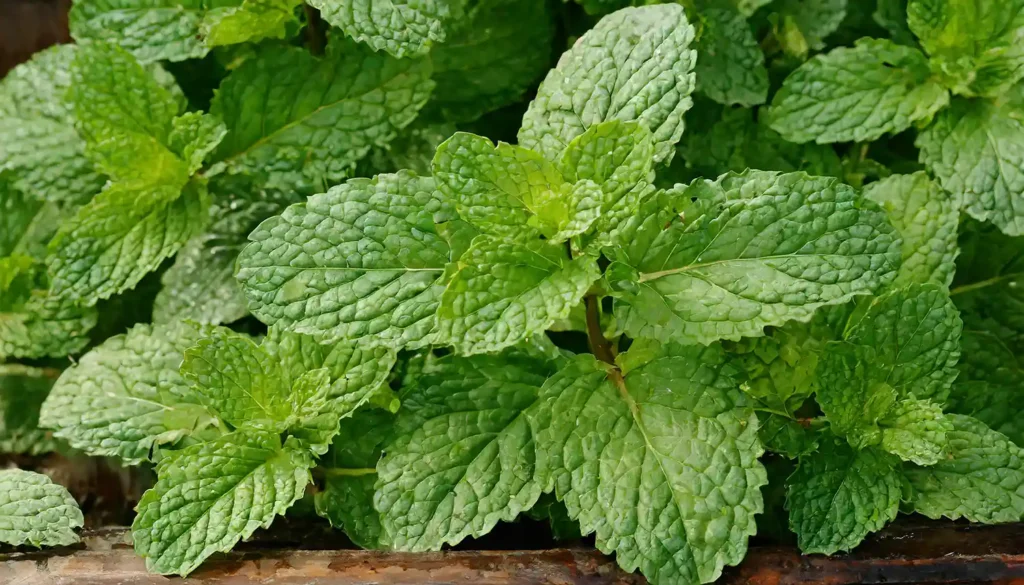
Final Thoughts
Peppermint oil, a derivative of the peppermint plant, is a testament to the power of natural remedies in both traditional and modern medicine. From its soothing effects in aromatherapy to its pain-relieving properties when applied topically, Peppermint oil showcases a remarkable range of benefits.
However, the journey of using Peppermint oil responsibly is marked by understanding its limitations and potential risks, particularly the dangers associated with consuming it. As we embrace the wonders of this potent essential oil, let us also commit to its safe and informed use, ensuring that we benefit from its therapeutic properties while respecting its potency.
Whether used in diffusers, as part of a massage blend, or in herbal medicine, Peppermint oil remains a valuable and versatile component in alternative health solutions.


